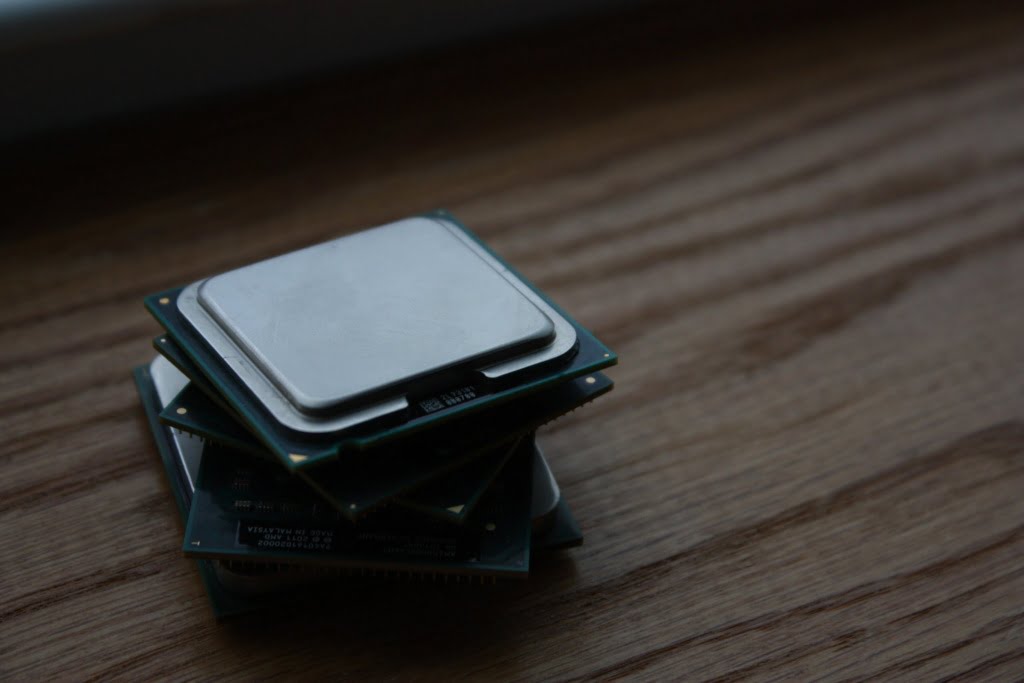What is All Cores Turbo? Differences from Base Clock and Max Turbo.
In the server hosting industry, one of the most confusing hardware performance statistics we are faced with is CPU ‘core performance’, a metric that is advertised differently by just about every manufacturer, which makes it about as easy to understand as string theory, algebra or if pineapple belongs on pizza!

For today’s blog entry, we want to break through some of the confusion around CPU core performances, including base clock speeds, max turbo speed, and all cores turbo, and help explain the importance of all cores turbo as it relates to real CPU performance.
To begin, let’s start with looking at the single-core turbo (maximum turbo) that Intel ctively advertises. This metric is not terribly useful for servers, as a heavily loaded server will have multiple cores active simultaneously. The maximum turbo is only achievable when a single CPU core is actively processing work, so this rarely applies to servers. You can think of the maximum single core turbo as the speed the processor can safely run at. Due to power and heat limitations, this maximum speed is only engaged when just one CPU core is active.
The base clock speed is the other commonly advertised CPU speed. This base clock speed is a very conservative advertised minimum CPU speed that the CPU almost never runs at. Whenever the CPU is actively doing work, the active cores will almost always run faster than this base clock. Therefore, neither the maximum turbo nor the base clock tells you very much about the real world performance of the CPU.
Because of those deficiencies, the primary focus of this article is the often-misunderstood and poorly documented “all cores turbo” CPU clock speed.
Table of Contents
What is “All Cores Turbo”?
- For CPUs, the ‘All Cores Turbo’ is the maximum clock speed the CPU will operate at, when all CPU cores are actively processing data at the same time. This clock speed is much faster than the advertised base clock speed, and much slower than the advertised maximum single-core-turbo speed.
Because all CPU cores are active in this scenario and drawing power, the all-cores-turbo speed is set lower than the maximum turbo speed, in order to ensure the CPU power draw doesn’t become excessive and overheat the CPU.
In routine use, unless you make unusual changes to your BIOS settings, the all-cores-turbo is the real speed that the CPU will function at, whenever all of the CPU cores are actively processing data. This speed is no longer actively advertised by Intel or AMD, to the point that you have to jump through hoops to learn what the All Cores Turbo speeds are for any given processor. Because this is the true speed of the CPU, and therefore very important to know when comparing CPUs, this lack of documentation is a big problem that we hope to resolve in this post.
Desktop CPUs often include woefully underpowered heatsinks and fans, which may make it difficult to achieve the All Cores Turbo all of the time. However, when it comes to servers, that’s not the case because server manufacturers take great pains to ensure their designs can operate the server under 24/7 load. Because of that, All Cores Turbo should be achievable essentially all the time, while keeping the CPU well below its maximum temperature.
If your server is not able to achieve these speeds under heavy CPU load, chances are something is wrong with the server, and the cooling system should be investigated for repairs. However, do keep in mind that CPU cores will be clocked lower when they are not being tasked with work, in order to save on power.
To make it easier to find the information pertaining to the All Cores Turbo speeds of CPU’s available through IOFlood.com, we’ve compiled a list of the best resources for you, broken down by CPU type.
Intel Xeon E5v4 “Broadwell” CPU’s
E5v4 “Broadwell” CPUs, despite being a couple of generations old, can perform quite well, especially with the higher end of the product line. As companies liquidate older servers to make room for new, this provides a great opportunity to get the top-of-the-line CPU from an older generation, at around the cost of a bottom-of-the-line model from the current generation, providing excellent performance per dollar.
Below we show the cores, base clock, and all-cores-turbo for the E5v4 CPUs that we commonly offer here at IOFLOOD.
| CPU | CPU Cores | Base Clock | All Cores Turbo | Max Turbo | TDP |
| E5-2680v4 | 14 | 2.4GHz | 2.9GHz | 3.3GHz | 120w |
| E5-2690v4 | 14 | 2.6GHz | 3.2GHz | 3.5GHz | 135w |
| E5-2695v4 | 18 | 2.1GHz | 2.6GHz | 3.3GHz | 120w |
To read the comparative specs for the entire E5v4 Broadwell CPU range, you can find them on the Puget Systems website here:
Intel Xeon E5 v4 Broadwell Buyers Guide (Parallel Performance)
Intel Xeon E5v3 “Haswell” CPU’s
The E5v3 “Haswell” CPU line, much like the newer E5v4 “Broadwell” CPUs, provides excellent performance per dollar. However, with the E5v4 coming down in price and offering a nice bump in performance and energy efficiency, at this time IOFLOOD no longer sells the E5v3 line of servers.
To provide a comparison point to the newer E5v4 line of CPUs, below we have the specifications for a couple of the more popular model CPUs from when we were selling E5v3 CPU servers. For example, the E5-2695v3 is very similar to the more modern E5-2680v4, but is slightly slower.
| CPU | CPU Cores | Base Clock | All Cores Turbo | Max Turbo | TDP |
| E5-2680v3 | 12 | 2.5GHz | 2.9GHz | 3.3GHz | 120w |
| E5-2695v3 | 14 | 2.3GHz | 2.8GHz | 3.3GHz | 120w |
If you’re interested in the rest of the E5v3 CPU range, Puget Systems has an excellent article here:
Xeon E5v3 All Core Turbo and Amdahl’s Law
Intel Xeon Skylake Scaleable “Purley” CPUs
As Skylake is a newer generation of Intel Xeon processors, we are keeping our eye on this space. As large corporations discard perfectly serviceable equipment like clockwork after 3 – 4 years, we anticipate that soon, large quantities of first-generation Skylake CPUs will be coming down in price within the next year.
While we don’t actively utilize these CPU’s at this stage, they are a CPU that we have on our watch list for future use. For example, the 24 core Xeon Platinum 8160 CPU, rated for 150w TDP, provides a reasonable upgrade point from the E5v4 model CPUs without using too much additional power.
Based upon the range of processors available, the one we are keeping a close eye on is the 8160, as being the most likely one we expect to be offering in the future. The 8180 is the top end model from this range, and as such is unlikely to come down in price, but we list it here for comparison purposes.
Again, Puget Systems has an excellent article where you can find detailed specifications on the Skylake range of CPUs, including the all-cores-turbo figures. If you want to look at the rest of the clock speeds for the Skylake CPU range or review any of the other CPU’s in the Skylake range, you can find them all here:
| CPU | CPU Cores | Base Clock | All Cores Turbo | Max Turbo | TDP |
| Xeon 6138 | 20 | 2.0GHz | 2.7GHz | 3.7GHz | 125w |
| Xeon 6154 | 18 | 3.0GHz | 3.7GHz | 3.7GHz | 200w |
| Xeon 8160 | 24 | 2.1GHz | 2.8GHz | 3.7GHz | 150w |
| Xeon 8168 | 24 | 2.7GHz | 3.4GHz | 3.7GHz | 205w |
| Xeon 8180 | 28 | 2.5GHz | 3.2GHz | 3.8GHz | 205w |
Intel Scalable Processors Xeon Skylake-SP (Purley) Buyers Guide
Intel Xeon E5v2 “Ivy Bridge” CPUs
Although the Ivy Bridge processors are pretty old at this point, they still provide a good value for money, with a Dual CPU E5-2680v2 server offering 20 CPU cores. As such, they are a popular option among our customers. This family of CPUs is the last one where Intel was open about the all cores turbo speeds, making them easier to learn about.
| CPU | CPU Cores | Base Clock | All Cores Turbo | Max Turbo | TDP |
| E5-2680v2 | 10 | 2.8GHz | 3.1GHz | 3.6GHz | 115w |
Summary:
It is important to remember that despite being the advertised clock speed, base clock is only available if you manually enter BIOS and disable turbo boost / Intel Speed Step entirely. Doing so will massively reduce performance and increase power use, so this is never recommended. Aside from that scenario, the CPU will rarely be clocked at base clock, which is why base clock is a misleading metric when comparing processors.
Whenever all CPU cores are actively processing data, the all-cores-turbo is the clock speed that will be in use nearly all of the time. Therefore, this should instead be thought of as the “real” cpu speed and you should try to find out this speed whenever comparing CPUs. We hope this article has informed you of this important specification, and has given you the resources to learn what the all-cores-turbo speed is for the CPUs you are considering.
Do you love servers?
We hope this article has helped clarify some of the confusion around CPU core speeds and performance. See some of our other articles if you want to know more about similar topics regarding performance optimization, RAID, or server configuration and administration, and don’t forget to check out our monthly server parts pricing reports if you’re interested in tracking those as well.
If you love servers like we do, we’d love to work together! IOFLOOD.com offers dedicated servers to people like you, and as part of that service, we optimize and test the network card driver when installing your OS to maximize performance. To get started today, click here to view our dedicated servers, or email us at sales[at]ioflood.com to ask for a custom quote.


